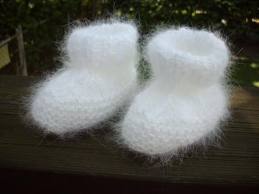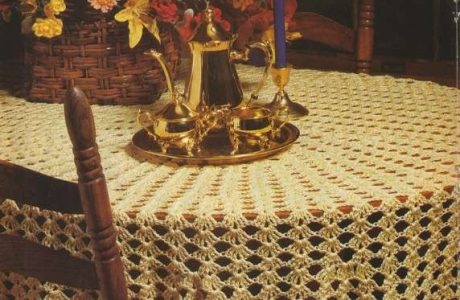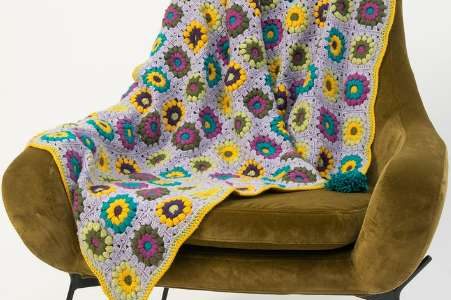Did you know that not all sheep have fleece, that there is at least one breed of sheep that has ‘hair’ rather than fleece thus making it of not much use to crocheters? That’s just one of the hundreds of things you can learn about fleece, yarn, and their uses in this unique, encyclopedic volume that is simply amazing to read!
While I am not a person who is ever likely to shear a sheep or even buy fleece and process it into yarn, I do love crocheting with natural fibers and wool is natural. Other sources of natural fibers are briefly addressed in this book (bamboo and corn for instance) as are synthetic yarns like those we see in every large craft store. But, this book is devoted to animal fibers, those produced by sheep, goats, alpacas, llamas, camels, etc. There are many sources of animal fibers but you’d be hard pressed to find all the kinds of information about them rounded up in one resource like this book.
First, there are lots of pictures. Lots! Pictures of the animals and their raw fleece, the cleaned fleece, the yarn spun from the fleece, and sometimes a skein of retail yarn and a sample worked in knit, crochet, or weaving. Geography and history both play strong roles in the development of the various breeds of animals and the resulting yarn we are able to get from them. Mixed breeds and mixed fibers are also discussed. The natural color range available from each animal and group of animals is also important. The range from pure white through shades of beige and brown and gray to the deepest black can all be found in nature. Other colors are obtained with the use of dyes. The fiber characteristics and suitable uses for each are also discussed at length.
The two page summary of fibers and suitable uses is an extremely valuable guide. I always thought Merino was the ‘perfect’ wool – not highly allergy producing, nice range of colors, great price per skein, a soft hand, and the availability of superwash convenience. Those qualities had me choosing Merino over many other fibers for things like baby sweaters, scarves, and afghans. Now, I feel more confident in my ability to select other yarns that will be appropriate for the project I have in mind. Next time, I may try a Rambouillet or a Corriedale, both of which this book defines as suitable for my projects and that I have seen on the shelves of local yarn vendors.
On the other hand, I would never have associated the wonderful luxury Cashmere with the not so lovely Toggenburg Goat who is a Cashmere producer! Ugly now has a new face and it has horns! But, I still love Cashmere and will still pay the freight for the occasional splurge. Angora goats are much cuter and produce a wonderful fiber (Mohair) that is perfect for shawls.
Then, there are Camelids that include animals that produce the most wonderful of fibers, alpaca and vicuna, among others. We’ve all seen Camel’s Hair goats, but I’ve never seen Camel’s Hair yarn, although it is available. Other yarn-producers include dogs, rabbits, horse, bison, cat, and the highly valued qiviut from the Musk Ox. Who woulda’ thought a Musk Ox could produce something as luscious as qiviut?
I would love to be able to pet every yarn described in this book. I think that might be Crochet Heaven! In the meantime, I’ll do a lot of dreaming. Dreaming that I have access to all those wonderful fibers and the time to crochet something from each and every one of them!
This book is a must-have for every fiber artist. It is an invaluable resource for the crocheter, knitter, spinner, and weaver. It would make a perfect gift for that special fiber artist in your life. The cost may put it in the splurge category, but that’s okay. S/he’ll definitely be grateful – and will crochet something for you made from a yarn s/he’d never previously tried!
BOOK SPECS:
The Fleece & Fiber Sourcebook by Deborah Robson and Carol Ekarius
Storey Publishing, 2011
Large, heft, hardback book, often described as a ‘coffee table’ book – but more useful than most.
$35 USD
438 pages, with a good index







Leave a Reply